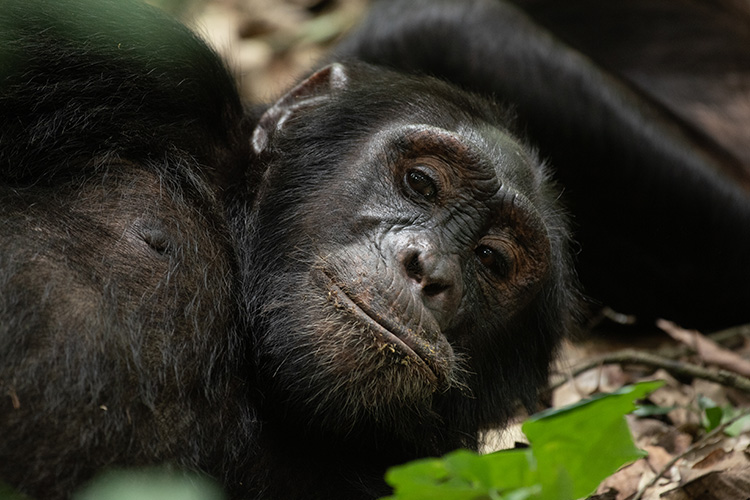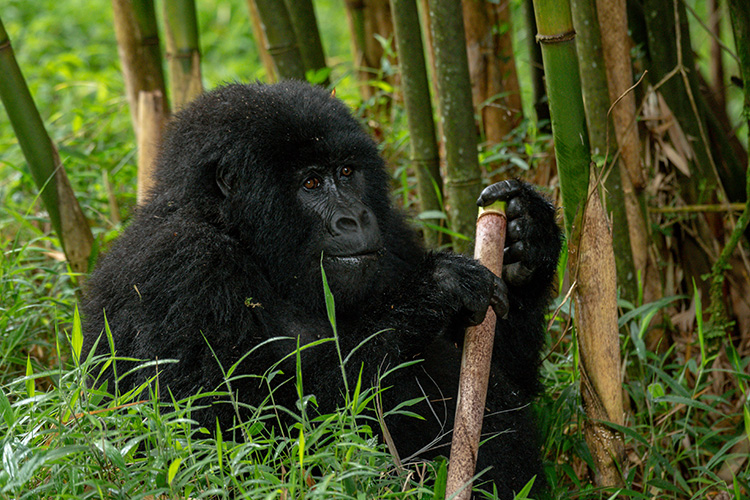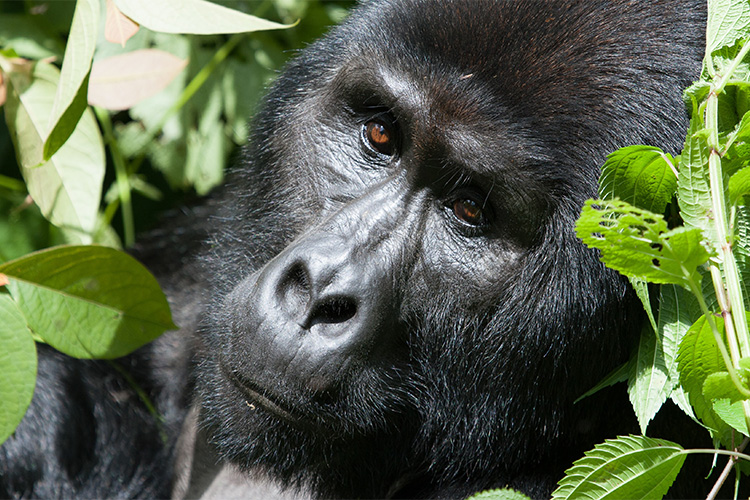Chimpanzee Trekking
Chimpanzee trekking in Kibale National Park is an exhilarating experience that allows visitors to immerse themselves in the natural habitat of these fascinating primates. Accompanied by experienced guides, visitors embark on a trek through the forest, traversing varied terrain in search of habituated chimpanzee communities. The trekking routes wind through dense vegetation, across streams, and sometimes uphill, offering adventurers a glimpse into the diverse ecosystems of Kibale.
During the trek, visitors have the opportunity to observe chimpanzees in their natural environment, witnessing their behaviors, interactions, and social dynamics. Encounters with these intelligent creatures are often awe-inspiring, as visitors observe them grooming, foraging for food, or playing within their family groups. Guides provide valuable insights into chimpanzee behavior, ecology, and conservation efforts, enriching the trekking experience with educational content.
Chimpanzee trekking in Kibale National Park typically lasts a few hours, with the duration varying depending on the location of the chimpanzee groups within the forest. While sightings are not guaranteed, the chance to observe these magnificent primates in their natural habitat makes chimpanzee trekking a must-do activity for wildlife enthusiasts and nature lovers visiting Kibale.
Nature Walks and Forest Hikes
Exploring the forest trails of Kibale National Park on guided nature walks and forest hikes offers visitors a unique opportunity to connect with nature and discover the park’s diverse ecosystems. Led by experienced guides, these excursions take participants on a journey through lush forests, verdant grasslands, and scenic landscapes, providing insights into the park’s rich biodiversity.
During the walks, visitors have the chance to encounter a variety of wildlife, including monkeys, birds, butterflies, and smaller mammals, as they explore the park’s different habitats. Guides share their knowledge of the local flora and fauna, pointing out interesting species and highlighting the ecological significance of Kibale’s ecosystems.
Daytime nature walks allow visitors to explore the forest trails at their own pace, with opportunities to photograph wildlife, observe birdlife, and appreciate the beauty of their surroundings. Night walks offer a different perspective, allowing participants to experience the forest after dark and encounter nocturnal creatures such as bushbabies, nightjars, and tree hyraxes.
Whether embarking on a leisurely stroll through the forest or embarking on a more challenging hike, nature walks and forest hikes in Kibale National Park offer a rewarding outdoor experience for visitors of all ages and fitness levels. With its stunning scenery, diverse wildlife, and knowledgeable guides, Kibale provides the perfect setting for nature enthusiasts to explore and connect with the natural world.
Bird Watching
Kibale National Park is a paradise for birdwatchers, with its diverse habitats supporting a rich variety of avian species, including endemic and migratory birds. Guided birdwatching tours led by experienced guides offer visitors the opportunity to explore the park’s forests, grasslands, and wetlands in search of feathered treasures.
During birdwatching excursions, participants have the chance to spot a wide range of bird species, from colorful forest dwellers to elusive swamp specialists. Guides use their expertise to identify bird calls, locate birding hotspots, and provide valuable insights into the behavior and ecology of the park’s avian inhabitants.
Early morning birdwatching tours offer the best opportunities for sightings, as birds are most active during the cooler hours of the day. Participants may encounter forest birds such as turacos, barbets, and sunbirds, as well as wetland species like herons, kingfishers, and jacanas.
In addition to guided tours, visitors can also explore birding hotspots independently, using trails, viewing platforms, and boardwalks to observe birds in their natural habitat. Whether you’re a novice birder or an experienced twitcher, Kibale National Park offers a birdwatching experience that is both rewarding and unforgettable.
Cultural Visits
Immersing oneself in the rich cultural heritage of the surrounding communities is an essential aspect of any visit to Kibale National Park. Guided cultural visits provide visitors with the opportunity to interact with local communities, learn about their traditions, and gain insight into their way of life.
The Batoro and Bakiga people, who inhabit the areas surrounding Kibale National Park, have unique cultural practices and traditions that reflect the region’s rich history and diversity. Visitors can visit nearby villages, meet community members, and participate in cultural activities such as traditional dances, storytelling, and handicraft demonstrations.
A visit to the King’s Palace in Fort Portal offers a glimpse into the history of the Toro Kingdom and the cultural significance of the Batoro people. Guided tours provide visitors with valuable insights into the kingdom’s traditions, customs, and royal heritage, offering a deeper understanding of the region’s cultural identity.
In addition to cultural exchanges, visitors can also support local communities through responsible tourism initiatives such as community-based tours, homestays, and artisanal workshops. These experiences not only provide economic opportunities for local residents but also foster cross-cultural understanding and appreciation.











